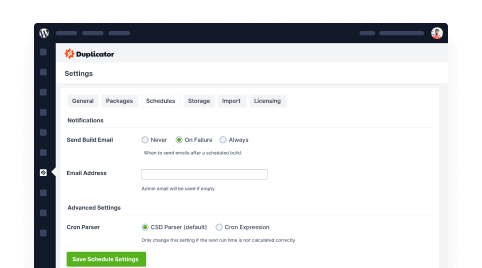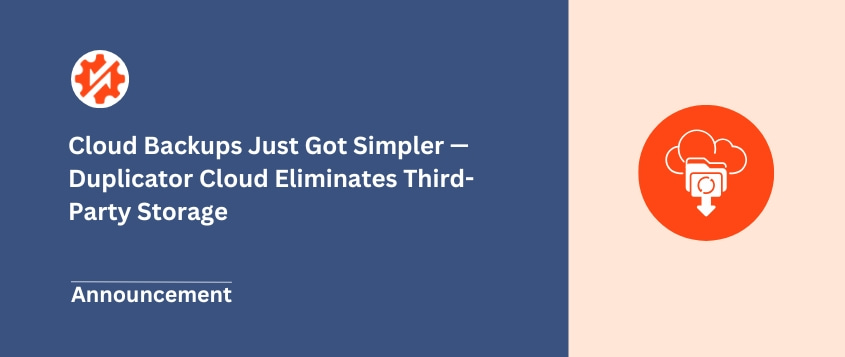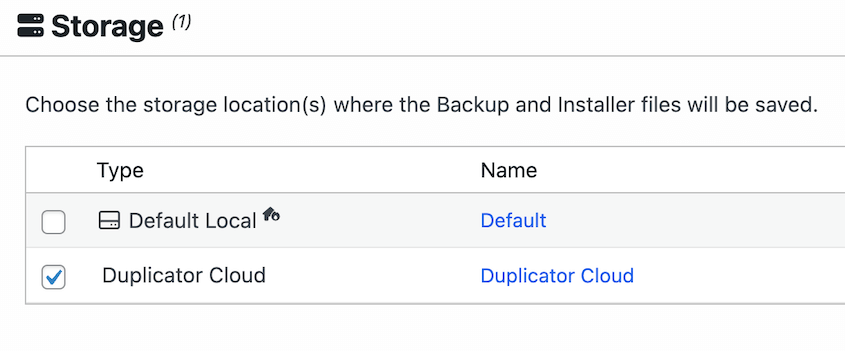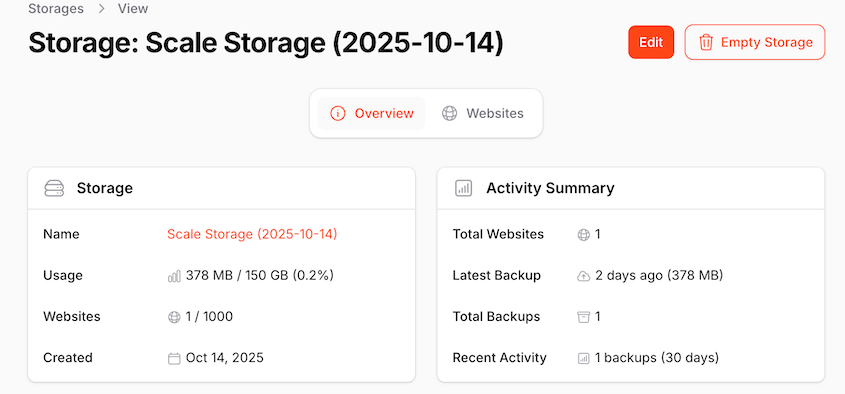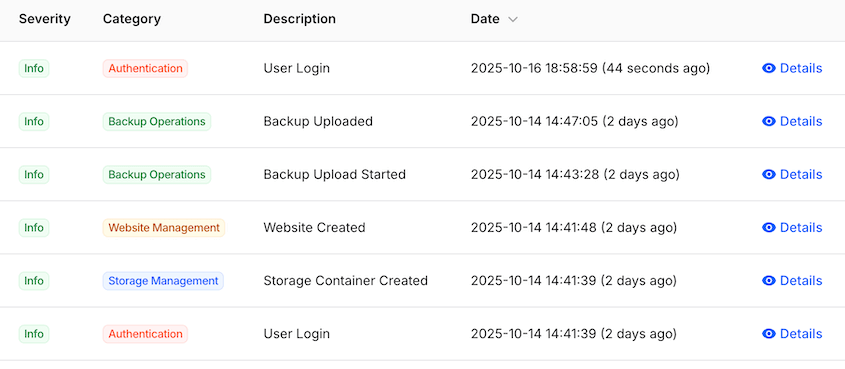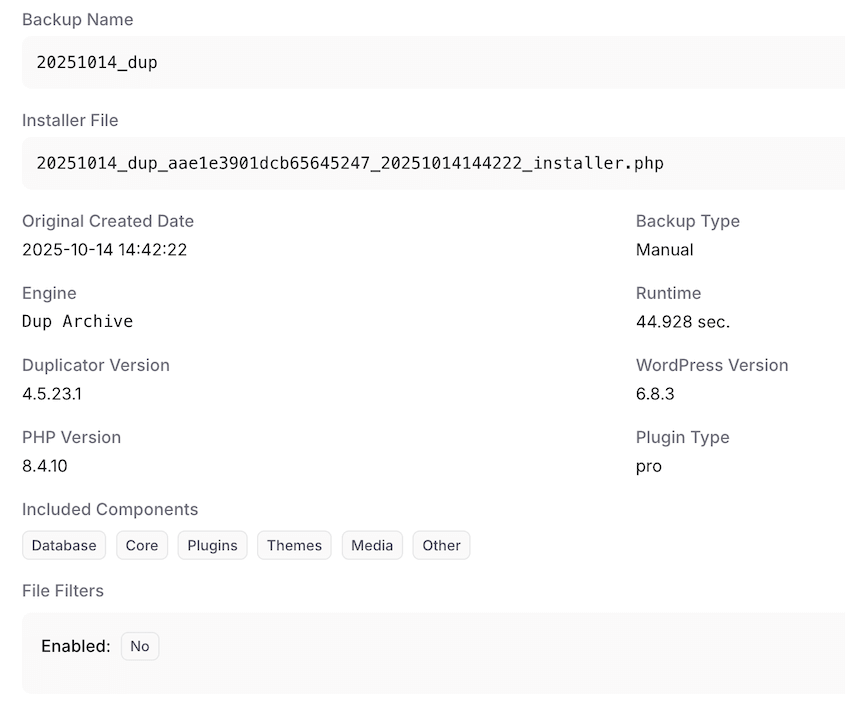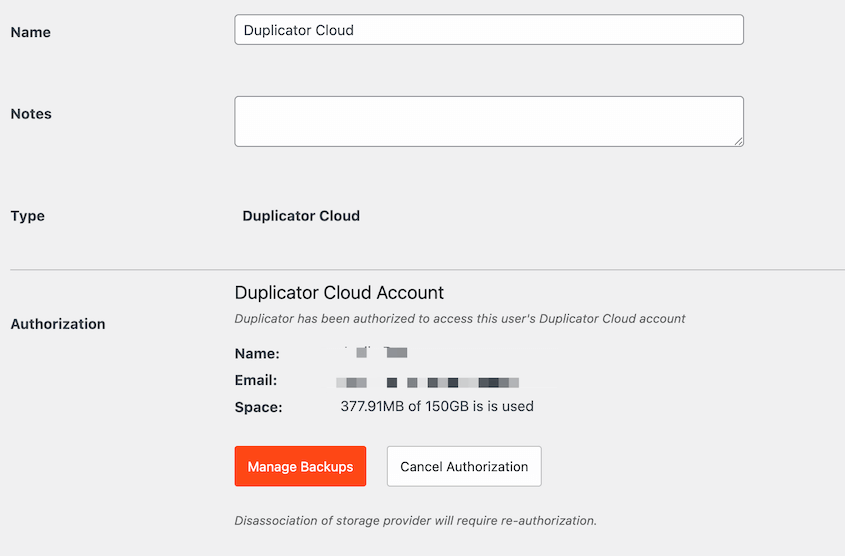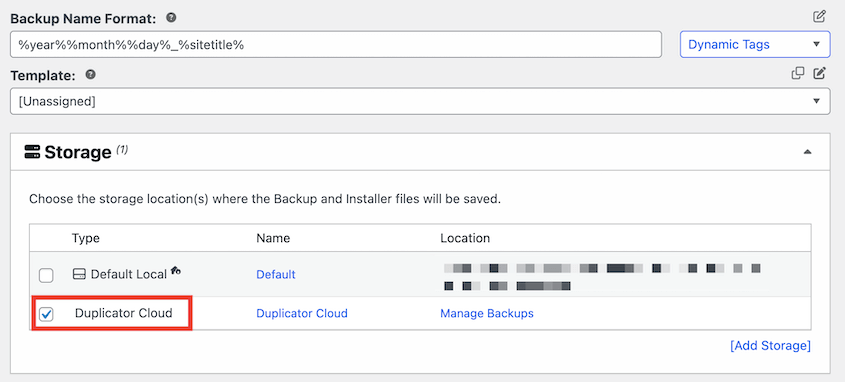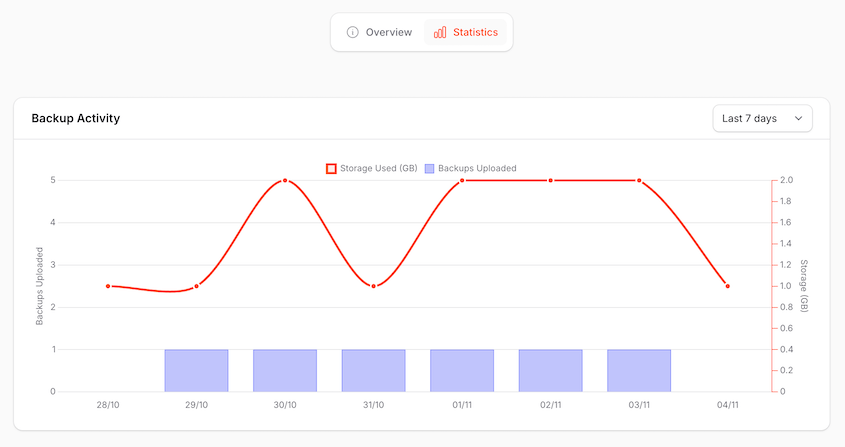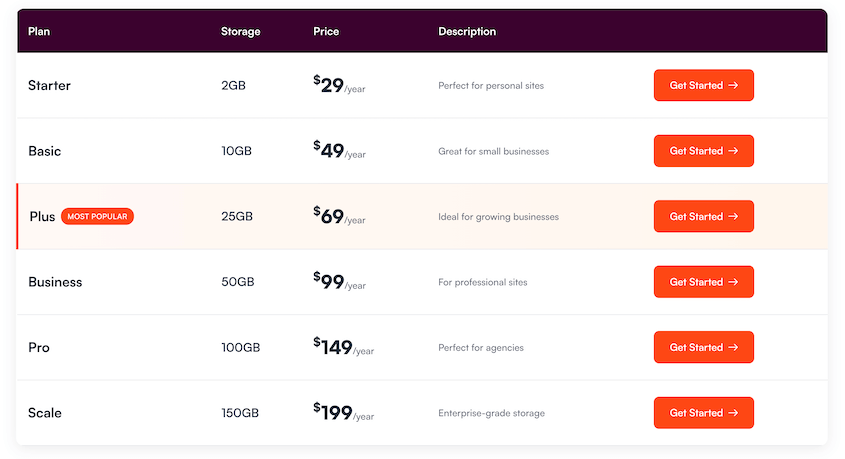Backing up your WordPress site to the cloud just got a lot simpler.
For years, the only way to get backups off your server was connecting external services like Google Drive, Dropbox, or Amazon S3.
It meant managing credentials across multiple platforms, learning different interfaces, and trying to figure out who to contact when something inevitably broke.
We kept hearing the same question: “Why can’t this just work inside WordPress?”
So we built it. Native cloud storage that lives inside Duplicator Pro, with straightforward pricing and a setup process that takes minutes instead of hours.
You can finally stop juggling multiple cloud services, searching for API keys, and wondering whether your backups actually made it off-site.
Are you ready to see what Duplicator Cloud has in store for you?
Built-in Off-Site Storage
The old way of handling remote backups had you choosing between Google Drive, Dropbox, Amazon S3, and a dozen other services. Each one required its own account, credentials, and learning curve.
Beyond the technical hassle, you had to research which service to trust with your data. You compared their pricing models (which often changed without warning) and hoped they didn’t suddenly modify their terms of service.
Cloud storage is now built directly into Duplicator Pro. You buy storage space, manage it through your Duplicator account, and if something goes wrong, you know exactly who to contact for help.
You can easily follow the 3-2-1 rule—three copies of your data, stored in two different formats, with one copy kept off-site. Duplicator will handle both your local and cloud backups, so you’re never struggling to find out where your data lives.
This becomes even more valuable if you’re managing sites for clients.
You’re not maintaining spreadsheets full of API keys or trying to remember which storage service your client uses. Everything stays in your WordPress dashboard and Duplicator’s new cloud storage.
Detailed Cloud Storage Dashboard
Most backup plugins tell you whether a backup succeeded or failed, and that’s about it.
The new Duplicator Cloud dashboard displays your storage usage in detail. You’ll see exactly how much space you’re using and how much is available, so you never get caught off guard by surprise limits.
You’ll see an activity log for your entire team. If backups are suddenly running less frequently or there’s an unusually small backup file, you’ll notice right away.
When you’re managing multiple sites, each one gets its own dedicated dashboard.
You can review individual backup details like:
- File size
- Database size
- Processing time
- The PHP version running on that site
- What data was included in the backup
- Which backup engine handled the job
This level of detail matters when you’re troubleshooting.
If you see a backup suddenly take 8 minutes instead of 45 seconds, you can immediately start pinpointing the issue. If your database backup is unexpectedly half its normal size, you can address it before it causes real problems.
Faster and Easier Cloud Backups
Setting up cloud storage used to feel like a massive project. You’d spend time researching which service to use, create yet another account, generate API keys, carefully copy them into WordPress, and test the connection.
If it didn’t work, you’d spend even more time debugging authentication errors and permission settings across two completely different platforms.
We’ve condensed that entire frustrating process down to just a few clicks. You purchase storage, head to Duplicator Pro » Settings in your WordPress admin, and connect using your Duplicator Pro License.
The plugin automatically creates a new storage location for Duplicator Cloud.
The next time you create a backup, simply select Duplicator Cloud as the storage location. No API keys to generate, no OAuth flows to navigate, and no wondering if you copied the right token.
After Duplicator backs up your data, it’ll automatically be uploaded to your cloud account.
For agencies and developers managing dozens of client sites, this time savings adds up incredibly fast. What used to take 15 minutes per site now takes about two minutes of setup.
Scalable Cloud Pricing
Your website doesn’t stay the same size forever. You add more content, your audience grows, you install new features, and your backup files naturally get bigger over time.
Most cloud storage services force you to guess what you’ll need a year from now. That means you’re either wasting money on unused space or scrambling to upgrade when you run out of room at the worst possible moment.
We built a pricing structure that grows alongside your site. You can start with what makes sense today and upgrade later without switching services or reconfiguring anything:
- Starter: $29/year (2GB)
- Basic: $49/year (10GB)
- Plus: $69/year (25GB)
- Business: $99/year (50GB)
- Pro: $149/year (100GB)
- Scale: $199/year (150GB)
A 2GB starter plan works perfectly for most small sites. Think portfolio sites, local business websites, or personal blogs.
If you’re running a WooCommerce store with product images and customer data or a membership site with user-generated content, you’re probably looking at the 25GB or 50GB plans.
Managing multiple client sites or a multisite network? The 100GB or 150GB plans give you enough breathing room to work without constantly monitoring your usage numbers.
Because everything stays within the Duplicator ecosystem, upgrading is just a billing change. Your backups keep running on schedule, your storage locations stay connected, and nothing breaks in the process.
Secure Your Backups in Duplicator Cloud
If you’re ready to protect your website data with cloud storage, upgrade your Duplicator plugin to the latest version. Then, pick a storage plan that matches your needs.
Once you connect it in WordPress, Duplicator handles everything else automatically. Your first cloud backup can run within minutes of setup!
Not using Duplicator Pro yet? Upgrade today to get website backup tools, storage, and support all from the same team.
If you have questions about setup, pricing, or how this fits with your existing backup workflow, our support team is standing by to help.
While you’re here, check out Duplicator’s other new features:
Joella is a writer with years of experience in WordPress. At Duplicator, she specializes in site maintenance — from basic backups to large-scale migrations. Her ultimate goal is to make sure your WordPress website is safe and ready for growth.

